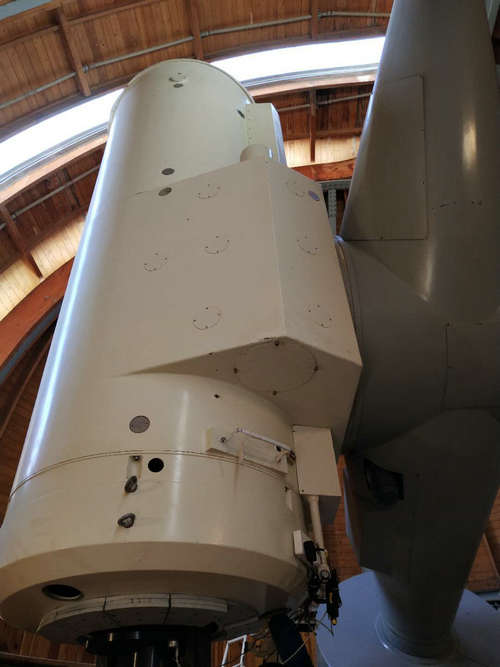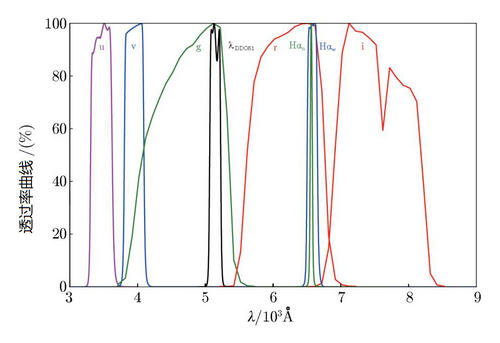National Astronomical Observatories of Chinese Academy of Sciences (NAOC), as a comprehensive national astronomical research institute, and also a core astronomical research unit of Chinese Academy of Sciences(CAS), responds positively to the One Belt and One Road Initiative (B&R Initiative), and carries out actively the international cooperation on astronomical science and technology innovation with countries along the Initiative, particularly with Uzbekistan. Remarkable achievements have been made, including telescope upgrading and scientific observations, which have laid a solid foundation for the subsequent long-term cooperation.
In May 2018, Prof. Shuhrat Ehgamberdiev, Director of UlughBeg Astronomical Institute (UBAI), Uzbekistan Academy of Sciences (UAS) and the academician of UAS, published an article in Nature Astronomy titled "Modern astronomy at the Maidanak Observatory in Uzbekistan" (Nature Astronomy, 2018, 2, 349-351),which introduces the history of UBAI, superior observing conditions of the sites (90% of the clear night probability and seeing of ~ 0.69 seconds on average), current status of the telescope and future plan. The cooperation between UBAI and NAOC and the joint SAGE survey project, as well as the expected fruitful scientific results of the project are well introduced, in the main part of the article.
During the visit to Uzbekistan in September 2013, President Xi Jinping of China and President Karimov of Uzbekistan stressed together the importance of strengthening cooperation in the field of astronomy for deepening bilateral friendly relations. With the support of B&R Initiative, the astronomical organizations of the two countries signed a cooperation agreement in March 2014. NAOC, together with Xinjiang Astronomical Observatory (XAO), Nanjing Institute of Astronomical Optics & Technology (NIAOT), and Yunnan Astronomical Observatory (YAO), has upgraded the 1-meter telescope in Maidanak Astronomical Observatory (MAO). It is now equipped with a brand-new Andor4K×4K CCD camera, and the field of view (FoV) extends to 32'×32'; equipped with broadband UBVRI and narrowband Hαn/Hαw filter system, which greatly expands the observation ability of the telescope, and thus makes the telescope a modern piece of equipment. According to the agreement, Chinese astronomers have obtained 70% of the telescope's dark observation time for five years after the telescope completes upgrading.
Stellar Abundance and Galaxy Evolution (SAGE) is an international cooperation photometric survey project led by NAOC with Prof. Gang Zhao as PI, and with the participation of UBAI, XAO and the Steward observatory of the University of Arizona, USA. The survey uses a unique SAGE photometric system (including 8 pass bands of uS/vS/g/r/i /Hαn/Hαw/DDO51) to measure accurately the stellar atmospheric parameters of F/G/K stars (including effective temperature Teff, surface gravity log gand metallicity[Fe/H]) and interstellar extinction. The northern sky deep survey, using the MAO 1-meter telescope, the Steward observatory Bok 2.3-meter telescope at the University of Arizona and the 1-m telescope at Nanshan Station of XAO, is expected to produce a photometry catalog of about 500 million stars and to obtain stellar atmospheric parameters and interstellar extinction values. At present, the project is going smoothly. The uS/vS observation is closing to the end, the gri-bands are completed, and observations in the Hαn/Hαw band have been being carried out on MAO 1-m telescope since September 2018. The data can be used to accurately measure the interstellar extinction values of a large sample of the Galaxy, thus we can ensure an accurate extinction correction before calculating stellar atmospheric parameters.UBAI has also actively requested participation in the project to play a role in observations and related sciences.
In addition, the article introduces the other scientific projects, such as gamma-ray afterglow, supernova monitoring, gravitational lensing, gravitational wave follow-up observations and theoretical research projects, as well as the observation training for students.

Fig1. MAO 1-m Telescope

Fig2. The filter transmission of the SAGE photometric system
